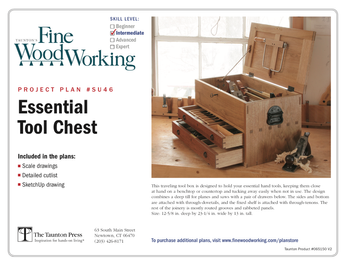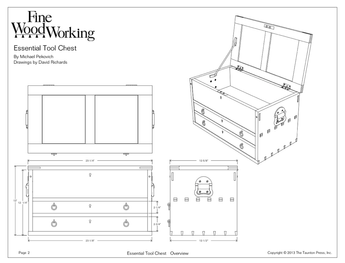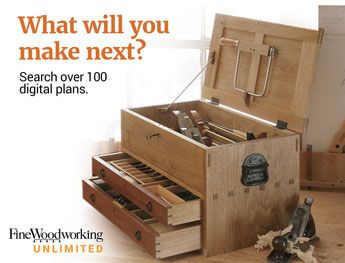I am planning to build a corner cabinet. Seen from above, the cabinet should have a triangular shape to fill the corner but not to protrude too far into the room. The cabinet should also have drawers, which is kind of interesting because the drawer sides are not parallel to one another.
Of course, every drawer needs a clean path it can slide on.I found an article on woodgears that shows a nice solution for this problem:
http://woodgears.ca/drawers/index.html, see chapter “Centre Guide Rail”.
Any ideas, tipps or links which show me how I can build this sort of drawer guide?
Best Regards
Mat















Replies
guide, guide
Since you can't use the sides of your triangular/trapezoidal drawers to help guide the path of the drawer, I'd combine the bottom guide shown in your link with another frame strut above each drawer and a U-shaped cleat at the back of the drawer. That would restrain the drawer from tipping down as it is opened, and will prevent the drawer from being pulled out of the cabinet unintentionally.
Depending on what you use for dr4awer bottoms, the drawer portion of the bottom guide could be either guide strips glued to the drawer bottom, or an inverted U-shaped channel. The latter would avoid having crossed grain between the components, thus minimizing wear.
I'd use good hardwood for the guide components, well-sanded (at least to 220) and waxed.
Mat,
Some old corner cabinets have a sort of pentagonal shaped drawer , with two short sides dovetailed conventionally to the front, and a "V"-shaped back, to take advantage of the space available. The dovetailing is more challenging to join the two back pieces to the sides and to one another, and the bottom must be shaped to suit as well, with the additional amount of useful space being hardly worth the additonal effort, (in my opinion).
What is seen far more frequently, is a conventional rectangular drawer, either a fairly long front and back with fairly short sides, or a relatively short front and back and longer sides; it depends somewhat on the size of the cabinet, and on what is intended to be stored in the drawer.
Framing in any case can be of the conventional sort, with bearers running from the side of the opening to abut the back (at a 45*angle), and with guides nailed, screwed and or glued to the bearers. If there is no shelf immediately above the drawer, a kicker ( a strip running front to back directly above the opening, in the center of the opening, or on one or both sides) will be helpful to keep the drawer from tipping down as it is opened. This can be a real problem if the drawer is filled with flatware, for instance.
Some of the rectangular drawers have a sort of "rudder" attached to the back, a block as tall as the back, extending 4-6" from the center of the back back at right angles, to help with the tipping problem, and to prevent (to some extent) over-extending the drawer when pulling it out and spilling silverware all over the floor.
Ray
This forum post is now archived. Commenting has been disabled